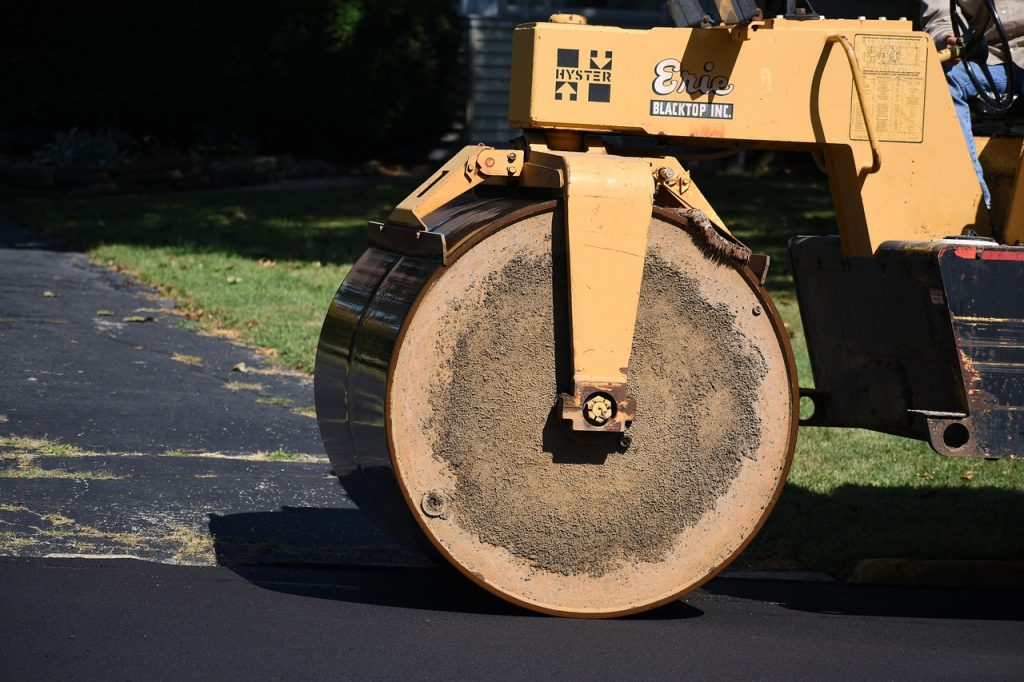A broad-based range of materials finds use in the construction of roads in India. These comprise soils (a combination of organic and processed soil), aggregates (belonging to both fine and coarse varieties found from rocks), binders such as bituminous materials, lime, etc. and cement along with miscellaneous resources used as admixtures to improve the performance of roads under heavy load and excessive traffic conditions.
Read on to learn how each of these materials contributes their prime functionalities in the construction of roads and highways.
Bituminous materials
- Also simply referred to as bitumen or asphalt, they constitute one of the most important materials used in the construction of roads.
- By and large, asphalt is recognized as a residue product obtained through a process that involves a distillation process of crude oil.
- In refined form, asphalt takes the garb of a thick, viscous, semi-solid material with a typical upkeep at normal atmospheric temperatures.
- The desired characteristics of viscosity and firmness are produced when asphalt is processed or blended in a controlled fashion.
- The resultant product is named as asphalt cement and penetration or paving grade asphalt.
Soil
- Major human-controlled expansion works have involved the usage of soils since time immemorial.
- Soil not only helps in the development of the foundation of roadways but also forms one of the commonest components as aggregate.
- Soils are attributed to be the most fundamental, abundantly available material used for roads and highway engineering.
- As a matter of fact, the soil is generally depicted by the term “common dirt”.
- The measures undertaken for preparing foundations help manipulate the soil components, transport and formulate them as aggregates.
Aggregates
- They make up for roughly more than 70 per cent of the entire construction cost of a normal roadway project.
- The superficial, basal, and sub-basal parts of the road are made up of aggregates
- Otherwise their amalgam with cement and water are used.
- Here the concrete considered may either be in Portland cement form or bituminous form.
- The property of strength of a layer is dependent equally on quality and proportion of the added ingredients.
- Aggregates are typified as hard, enduring, mineral materials and are often defined by the term “granular material of mineral composition”.
- They’re primarily acquired through excavation operations of mass deposits of sand, gravel, ledges or talus in mines and quarries.
Portland cement concrete
- Basically, it’s a concoction created with cement, water, sand, gravel, crushed stone and air.
- It takes shape when a paste of cement mixed with water is chemically combined and caused binding of the whole mixture as a rock-solid mass.
- Besides, Portland concrete can be identified as being formed of a component duo namely, aggregate and paste.
- The aggregate part consists mainly of sand and gravel and constitutes nearly 70 to 80 per cent of the overall concrete volume.
- Aggregates in together of fine and coarse textures should be chosen to enhance quality, strength, and durability and offer resilience to environmental impacts.
- Paste comprises of cement, water, and incorporated air.
Admixtures
- They consist of additives that are developed for improving a variety of features of concrete together with its plastic and hardened conditions.
- Other additive types which are increasingly becoming popular are the water reducing types and set retarding types.
- Water reducing admixture is meant to contribute extra operability into plastic concrete with lesser water content thereby leading to an increase in strength with a lower water to cement ratio.
- Set retarding admixture, on the other hand, is aimed at slowing down the mixture’s setting characteristics and hence allowing additional time for placement and putting in finishing touches.


